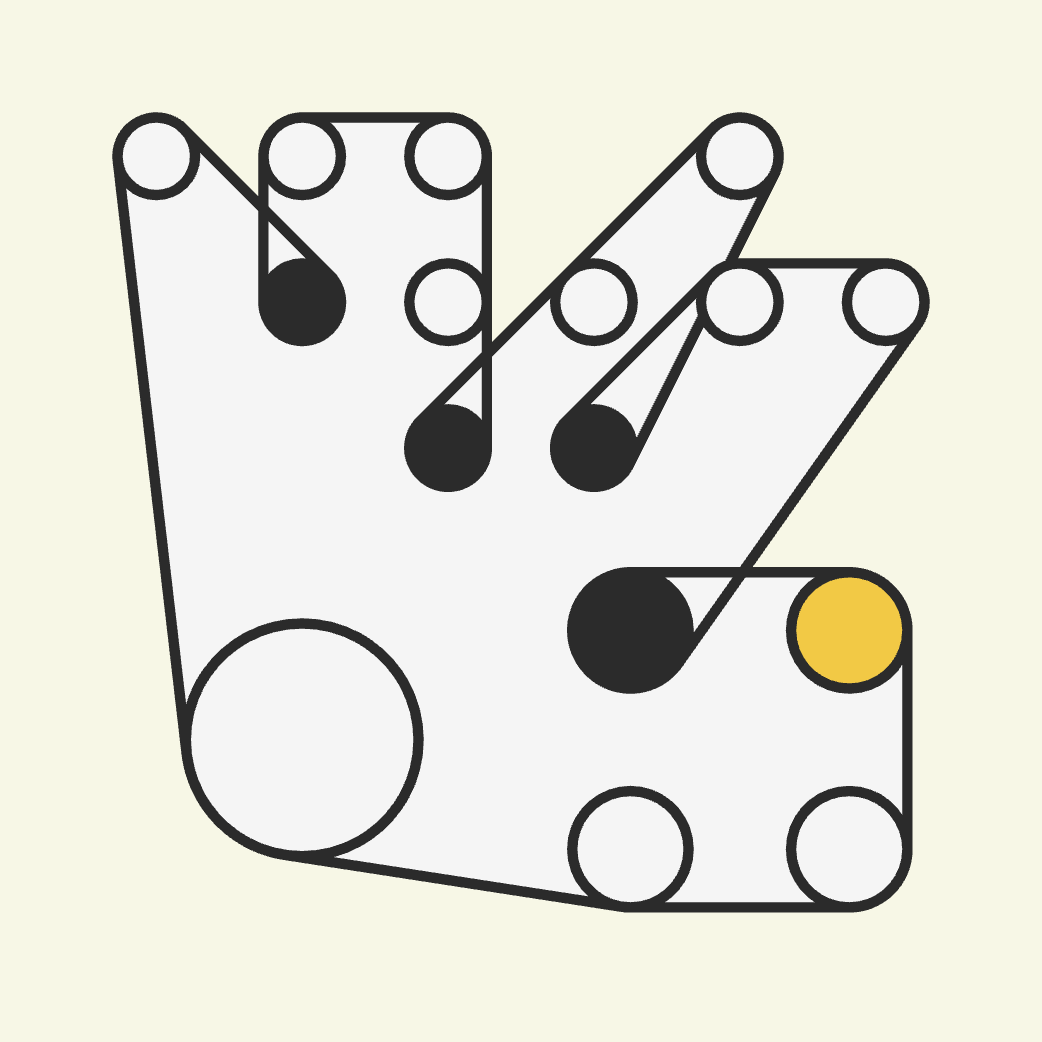Ringers #879 (The Goose) by Dmitri Cherniak
On June 15th, 2023 a computer generated artwork was sold for 6.2 million dollars at a Sotheby’s auction in New York. One of the most expensive NFTs ever sold, it became the pride and joy, and the symbol of a community. But what’s so special about this goose?
Ringers #879 (The Goose) by Dmitri Cherniak | Digital Art Explained
Ringers #879, also known as The Goose, is created by the Canadian engineer Dmitri Cherniak. It’s a generative artwork, which refers to art that’s generated by algorithmic codes or mathematical formulas.
Dmitri Cherniak created a set of images, shapes, and colors, and added certain rules to the code regarding what can and cannot be combined. The final outcome is determined by the algorithm itself, so the code brings about a different art each time it’s being run. The Goose is only one of the thousand artworks generated as part of the collection.
When a generative art collection is first made available, neither the artist nor the collector has any idea what the artworks will look like. And most Ringers look like this – colorful combinations of pegs and strings, resulting in abstract expressions.
But this one is different, because it looks like a goose. And the resemblance soars up its value to millions of dollars, because it was not intentional.
Ringers #879 (The Goose)
Why is it worth millions?
In most cases, the initial factor that goes into discerning the value of an artwork is aesthetics, meaning how it looks. Out of a thousand Ringers, The Goose is special because of a basic human brain malfunction.
Pareidolia is the psychological phenomenon where we perceive familiar patterns, shapes, or faces in random objects. Essentially, it's the mind's tendency to find recognizable images in unrelated or random patterns. This illusion is often experienced with clouds, stains on walls, and in this case, abstract art.
Pareidolia is the psychological phenomenon where we perceive familiar patterns, shapes, or faces in random objects.
The algorithm-generated artwork triggers pareidolia in viewers and leads to emotional responses, making the artwork more engaging. We become drawn to the work because of the unexpected form of a goose we perceive among all the pegs and rings.
While pareidolia itself doesn't single-handedly determine the value of The Goose, it’s the biggest contributor to the work’s appeal. The resemblance makes the viewer intrigued and it resonates emotionally with them, which – in today’s world – means it went viral.
With almost 40,000 views on the second market and countless memes and derivatives, The Goose claimed a memorable spot in mainstream media as well as in our minds.
GOLDEN GOOSE by Beeple
The unintentional result of perception and imagination leads to heightened interest, fascination, and engagement, which drives up The Goose’s value – in dollars as well as in cultural importance.
What makes Ringers so valuable?
“I’m going to show you a project that I think is going to help people learn about generative art. …you’ll see another level of generative art.”
The Goose isn’t even the most expensive Ringer on the market – the collection is highly valuable to the NFT community for being one of the first art projects to introduce generative art to the fine art world as well as to the broader public.
Ringer #109 (the most expensive one – sold for $7M)
Ringers were released in January 2021 on the well-known generative art platform, ArtBlocks. Each Ringer cost less than 150 dollars to mint, and the whole collection was sold out in 18 minutes.
“There are an almost infinite number of ways to wrap a string around a set of pegs. On the surface it may seem like a simple concept but prepare to be surprised and delighted at the variety of combinations the algorithm can produce.”
The charm of Ringers stems from its simplicity – Cherniak wanted to create art based on the simple concept of wrapping strings around pegs because there’s seemingly limitless ways in which to do so. When the artist prompted the algorithm to create a set of outputs, the result was a thousand visually compelling combinations – including one that resembles a goose.
The collection was the perfect project to get people excited about generative art because it showed how a simple and random system could bring about vastly different outputs. It introduced coding as a creative practice rather than a technical job. It showed that computer generated art can indeed evoke emotions in the viewer, and be highly valuable.
Ringers are still one of the top-selling NFTs out there, with a floor price around $80,000.
The unpredictability of code art, the charm of low odds, and our emotional response to the unplanned yet genius design make The Goose one of the most valuable generative artworks to date.














